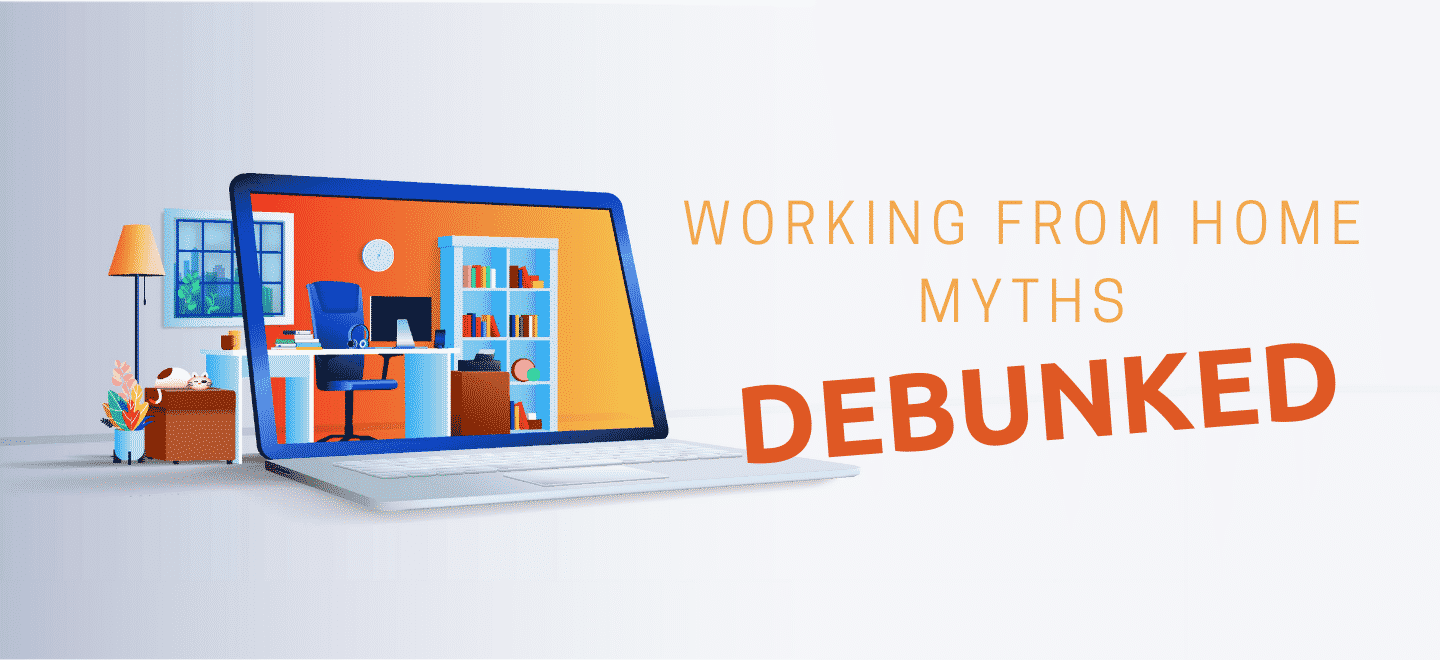Working From Home Myths: Debunked
Pre-COVID, many businesses did not want to adopt a flexible workstyle for their workforce. Working from home, a relatively modern concept was seen by many as being inefficient. Many worried that staff were less productive at home, a lack of visibility and monitoring cause anxiety over how employees were spending their time, and it was seen as a disruption to business rather than an aid.
Times have changed. Even before the pandemic led the drive, the workforce had evolved and the need for flexible working was being driven by employees causing businesses to react. This digital transformation that was happening had several factors; the median age of the workforce encompassing more and more tech-savvy Millennials and Gen Z who expected a high-quality user experience and flexibility from their job as a reflection of the technology they use in their personal time. If an app used every day for leisure provides a great user experience, why can’t I get the same thing from the programs I use for work?
As mentioned in our previous blog, 81% of Irish people would like to continue working from home several days a week once this pandemic is over and we return to work.
Myth 1: Employees aren’t as productive when they work from home
Says who? According to the National Survey Report on Remote Working, nearly 37% of respondents indicated that their productivity working remotely during COVID-19 is about the same as normal.
As explained in last week’s blog, working at home (COVID working) is not the same as working from home. The inability to work elsewhere coupled with the lack of childcare and space in your home can all affect productivity levels. That being said, even with these challenges in place, for the time being, 30% report that their productivity working remotely during COVID-19 is higher than normal.
Combining the above statistics, an overwhelming amount of Irish people are finding themselves to be as, or more, productive working from home.
Myth 2: Teams can’t see what everyone else is working on
The first part of this myth comes down to managers and the team they have built. Trust and communication are foundations of any productive and successful team, working from home simply amplifies their importance. It is impossible to oversee what your employees are doing 24/7, even if they are in the office.
Software can help with this. Managers have always been required to keep tabs on what their direct reports are working on. Working remotely doesn’t change that, but it does change the way that managers need to check-in. New processes, like daily check-ins or virtual meetings, will replace in-person catch-ups, whilst online tools like Microsoft Teams, SharePoint, and ShareFile allow managers and employees to view and share assets remotely and work on documents collaboratively, even when apart.
And though there is software that helps to keep tabs on employees, every minute of every working day, no one likes a micro-manager. You must trust your employees. If you still think an employee is measured by the time they spend in the office, you’ve got it all wrong. Employees need to be evaluated based on their outcomes and other KPIs, not their hours. If the work is being done and it’s being done well, does it matter in what time period it was done?
Myth 3: They don’t have access to all their files
Access to data and files has been one of the top concerns we have seen over this pandemic. With businesses not having worked remotely previous to this, would their employees be able to work on documents and have access to the files they would use in the office, and how was this going to affect the collaborative process?
Once the data was accessible through an online file sharing platform, such as SharePoint or Citrix Files, businesses have found that access to files is easier than it was before. Centralised data means that a document your colleague has started to work in their home, can be accessed and edited by you on your device – without the hassle of downloading, saving another copy after editing, emailing it back until you both end up with 10 copies of the one document while you work through it.
Myth 4: Teams and employees can’t communicate as well as in the office
Online messaging and chat platforms have taken over the way we communicate outside of the office – and now they are being especially utilised by users working from home. Messaging platforms, such as Microsoft Teams, can keep you in touch and up to date with your co-workers. Whether that be sending an update on a project you are working on, starting a team call to discuss a plan, or having a coffee chat with your co-worker before the day begins, communication this way is not the same as face-to-face interaction but that doesn’t mean it is less effective.
Video conferencing is important when connecting teams virtually. In the Remote Working National Survey, 54% of Irish respondents indicated that they prefer video conferencing with everyone’s camera enabled including their own.
Myth 5: Employees will miss the office culture too much
Not so much a ‘myth’ so much as being a worry, employers are afraid their employees will miss out on office culture whilst working remotely. And in the current situation, we’re sure many do! But looking at working from home as a general workstyle aside from COVID19, working remotely is a choice, and for those who miss the office culture too much, working remotely may not be the right fit for them.
However, as employers, there are ways you can make remote employees feel just as included as those physically in the office.
For Enterprise Solutions, we always accommodated remote working on an occasional basis. With COVID working, we had the whole team working at home so some of the things we introduced were; scheduling morning video meetings per team to ensure they remained united and in touch with one another regardless of physical location. Culture wise, we have a weekly video coffee morning, social events via video link, polls, and check-ins with co-workers. We hope these all contribute to creating an inclusive culture.
So there you have it – 5 of the top working from home myths debunked and evaluated. We saw in last week’s blog how popular working from home has been with the Irish workforce, and more importantly, their desire to keep that workstyle going after the pandemic ends.
Make sure you take a look at next week’s blog discussing the benefits of a distributed workforce for your business. Not just an individual matter, businesses can reap the benefits of remote workers in terms of cost savings, hiring the best possible team for your business, and employee satisfaction.

As Head of Sales and Marketing, Niamh’s passion for facilitating flexible workstyles stems from the importance of work-life balance to her personally. Working daily with companies that are looking to embrace a digital transformation gives Niamh invaluable insights on what can be achieved though embracing market leading technologies.




